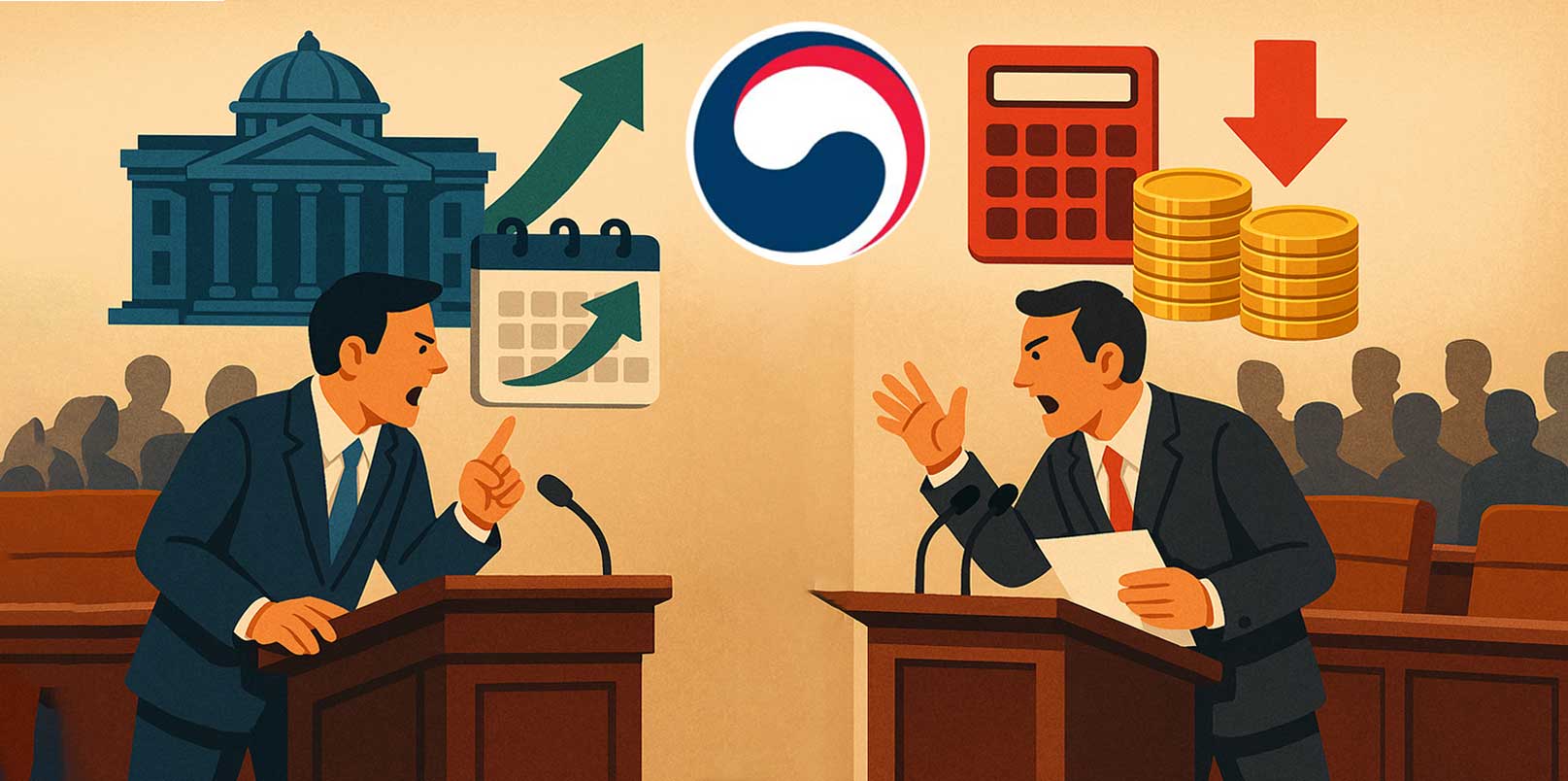‘Go woke, go broke’ is no longer true. Socially aware capitalism is the future of corporate responsibility – The Conversation

Report on the Integration of Corporate Strategy and Sustainable Development Goals
Introduction: Reconciling Profit with Purpose
A perceived conflict exists between corporate profit-seeking and the adoption of progressive social and environmental values. This report examines the dynamic between traditional shareholder primacy and the growing corporate alignment with the United Nations Sustainable Development Goals (SDGs). It posits that integrating social, environmental, and ethical considerations is not a detractor from profit but a crucial component of long-term value creation and sustainable business strategy. This analysis reframes the debate by assessing corporate responsibility through the lens of the SDGs, arguing for a balanced approach that moves beyond short-term financial returns.
The Evolving Landscape of Corporate Responsibility
Historical Precedent: Shareholder Primacy
For decades, the dominant business principle was shareholder primacy, which holds that a corporation’s primary duty is to maximize profits for its shareholders. This doctrine was legally reinforced in cases like the 1919 Dodge v. Ford Motor Co. decision and popularized by economist Milton Friedman. This perspective often places corporate leaders in a difficult position, as seen in the 2021 ousting of Danone’s CEO, Emmanuel Faber, who was criticized by some investors for prioritizing sustainability and social goals over shareholder value.
Legislative Shifts Towards Stakeholder Value and SDG 16
Modern corporate law is evolving to reflect a more holistic view of corporate duty, aligning with the principles of SDG 16 (Peace, Justice and Strong Institutions), which promotes accountable and inclusive institutions at all levels.
- United Kingdom: Section 172 of the Companies Act 2006 mandates that directors promote the company’s success for the benefit of its members while also having regard for the interests of employees, suppliers, the community, and the environment.
- Canada and New Zealand: Similar legislative provisions have been enacted or considered, allowing directors to incorporate environmental, social, and governance (ESG) factors into their decision-making, a model often described as “enlightened shareholder value.”
This legal evolution signifies a move towards governance structures that recognize the interconnectedness of corporate success and societal well-being.
Corporate Engagement with Social Issues and the SDGs
The Rise of “Woke Capitalism” and Stakeholder Expectations
The term “woke capitalism” describes corporate activism on progressive causes, often to appeal to values-driven consumers. This trend was underscored by the 2019 US Business Roundtable statement, which formally rejected shareholder primacy in favor of a commitment to all stakeholders, including customers, employees, suppliers, and communities. This aligns with SDG 17 (Partnerships for the Goals), emphasizing multi-stakeholder collaboration.
Case Studies: Aligning with SDGs and Navigating Consumer Response
Corporate campaigns engaging with social issues have produced mixed results, highlighting the complexities of aligning brand identity with specific SDGs. These actions directly impact SDG 12 (Responsible Consumption and Production) by influencing consumer perceptions and purchasing patterns.
- Nike & SDG 10: The campaign featuring Colin Kaepernick engaged directly with issues of racial justice, reflecting the aims of SDG 10 (Reduced Inequalities). While it sparked boycotts, it ultimately boosted sales, indicating a net positive alignment with a segment of its consumer base.
- Gillette & Bud Light & SDG 5: Campaigns by Gillette addressing “toxic masculinity” and Bud Light’s partnership with a transgender influencer touched upon themes central to SDG 5 (Gender Equality). Both faced significant backlash, demonstrating the risks of engaging in polarized social debates.
- Jaguar & Ben & Jerry’s: Rebranding efforts and political stances by companies like Jaguar and Ben & Jerry’s illustrate the ongoing tension between corporate activism and parent company or market expectations.
These examples demonstrate that while silence is no longer a neutral stance, corporate advocacy requires careful strategic alignment with both brand identity and stakeholder values to be successful.
A New Paradigm: Sustainable Growth Through Integrated Goals
Redefining Profit for Sustainable Economic Growth (SDG 8)
A fundamental shift is occurring in the definition of profit itself. Scholars like Edward Freeman argue that profit should not be seen as the ultimate corporate goal, but rather as an essential condition for continued operation—akin to red blood cells being necessary for life but not the purpose of life. This perspective reframes profit as a cyclical means of sustaining activity that creates value for all stakeholders. This model directly supports SDG 8 (Decent Work and Economic Growth) by promoting sustainable, inclusive economic growth that provides value beyond the balance sheet.
Conclusion: An Interdependent Strategy for Long-Term Value
The notion of a conflict between ethical conduct and economic performance is a false dichotomy. Modern corporate governance and strategy are increasingly demonstrating that responsibility and profitability are interdependent. By integrating the Sustainable Development Goals into their core business models, companies are not abandoning capitalism but redefining it for a new era. Directors are tasked with navigating a broader definition of corporate success, where alignment with goals such as SDG 5, SDG 8, SDG 10, SDG 12, and SDG 16 is not a matter of duty versus decency, but an essential element of a resilient and sustainable long-term strategy.
Analysis of SDGs in the Article
1. Which SDGs are addressed or connected to the issues highlighted in the article?
- SDG 8: Decent Work and Economic Growth: The article discusses the fundamental purpose of corporations, contrasting shareholder profit maximization with long-term value creation that considers employees and communities. This connects to promoting sustained, inclusive, and sustainable economic growth.
- SDG 12: Responsible Consumption and Production: The core theme of the article is corporate social responsibility (CSR), which directly relates to sustainable production patterns. It explores how companies are integrating social and environmental factors into their strategies and how consumers react to these practices.
- SDG 16: Peace, Justice and Strong Institutions: The article references specific legal frameworks like the UK’s Companies Act 2006 and debates around corporate governance. This pertains to developing effective, accountable, and transparent institutions, in this case, within the corporate sector.
- SDG 17: Partnerships for the Goals: The article mentions collective actions by corporate leaders, such as the US Business Roundtable’s statement, which represents a private-sector partnership aimed at redefining corporate purpose to align with broader societal goals.
2. What specific targets under those SDGs can be identified based on the article’s content?
-
SDG 8: Decent Work and Economic Growth
- Target 8.2: Achieve higher levels of economic productivity through diversification, technological upgrading and innovation. The article argues for a shift away from “short-termism” towards “long-term value creation” and “sustainable business strategy,” which aligns with achieving more sustainable economic productivity.
-
SDG 12: Responsible Consumption and Production
- Target 12.6: Encourage companies, especially large and transnational companies, to adopt sustainable practices and to integrate sustainability information into their reporting cycle. The entire article is a commentary on this target. It explicitly states that companies are “embedding social, environmental and ethical considerations into their business strategies.” The case of Danone’s CEO being ousted for focusing too much on sustainability highlights the tension and importance of integrating these practices.
- Target 12.8: By 2030, ensure that people everywhere have the relevant information and awareness for sustainable development and lifestyles. The article notes that “consumers are increasingly attuned to corporate social responsibility” and provides examples (Nike, Bud Light, Gillette) where consumer awareness and values led to sales boosts or boycotts, demonstrating the direct link between corporate actions and consumer awareness.
-
SDG 16: Peace, Justice and Strong Institutions
- Target 16.6: Develop effective, accountable and transparent institutions at all levels. The article discusses the evolution of corporate law, citing the UK’s “Companies Act 2006” which requires directors to consider employees, communities, and the environment. This is a direct example of developing more accountable corporate governance structures. The debate between “shareholder primacy” and “stakeholder governance” is central to this target.
-
SDG 17: Partnerships for the Goals
- Target 17.17: Encourage and promote effective public, public-private and civil society partnerships. The article highlights the 2019 statement by the “US Business Roundtable,” a group of 200 top chief executives, who collectively rejected shareholder primacy. This is a clear example of a private-sector partnership promoting a shift towards more sustainable and stakeholder-oriented business practices.
3. Are there any indicators mentioned or implied in the article that can be used to measure progress towards the identified targets?
-
For Target 12.6 (Adopt sustainable practices):
- Implied Indicator: The number of companies formally adopting stakeholder governance models over shareholder primacy. The article points to the “US Business Roundtable” pledge as a significant move in this direction, which could be tracked. The ousting of Danone’s CEO implies that the company’s focus on sustainability was a measurable (and debated) aspect of its strategy.
-
For Target 12.8 (Consumer awareness):
- Implied Indicator: Consumer purchasing decisions and public reactions based on a company’s social or environmental stance. The article provides concrete examples that serve as indicators: the “boosted sales” for Nike after its Kaepernick campaign and the “boycotts” triggered by Bud Light’s partnership with Dylan Mulvaney.
-
For Target 16.6 (Accountable institutions):
- Mentioned Indicator: The existence of national legislation requiring directors to consider stakeholder interests. The article explicitly mentions “section 172 of the Companies Act 2006” in the UK and similar provisions in Canada and New Zealand as legal instruments that serve as indicators of progress.
4. Summary Table of SDGs, Targets, and Indicators
| SDGs | Targets | Indicators (Mentioned or Implied in the Article) |
|---|---|---|
| SDG 8: Decent Work and Economic Growth | 8.2: Achieve higher levels of economic productivity. | Corporate adoption of “long-term value creation” and “sustainable business strategy” over “short-termism.” |
| SDG 12: Responsible Consumption and Production | 12.6: Encourage companies to adopt sustainable practices and integrate sustainability information into their reporting. | The number of companies shifting from shareholder primacy to stakeholder governance (e.g., members of the US Business Roundtable pledge). |
| 12.8: Ensure people have relevant information and awareness for sustainable development. | Consumer behavior (sales data, boycotts) in response to corporate social responsibility campaigns (e.g., Nike, Bud Light). | |
| SDG 16: Peace, Justice and Strong Institutions | 16.6: Develop effective, accountable and transparent institutions. | Existence of corporate laws requiring directors to consider stakeholder interests (e.g., UK Companies Act 2006, Section 172). |
| SDG 17: Partnerships for the Goals | 17.17: Encourage and promote effective public-private and civil society partnerships. | Collective pledges by private-sector groups to advance sustainable practices (e.g., the US Business Roundtable’s 2019 statement). |
Source: theconversation.com

What is Your Reaction?
 Like
0
Like
0
 Dislike
0
Dislike
0
 Love
0
Love
0
 Funny
0
Funny
0
 Angry
0
Angry
0
 Sad
0
Sad
0
 Wow
0
Wow
0














































































